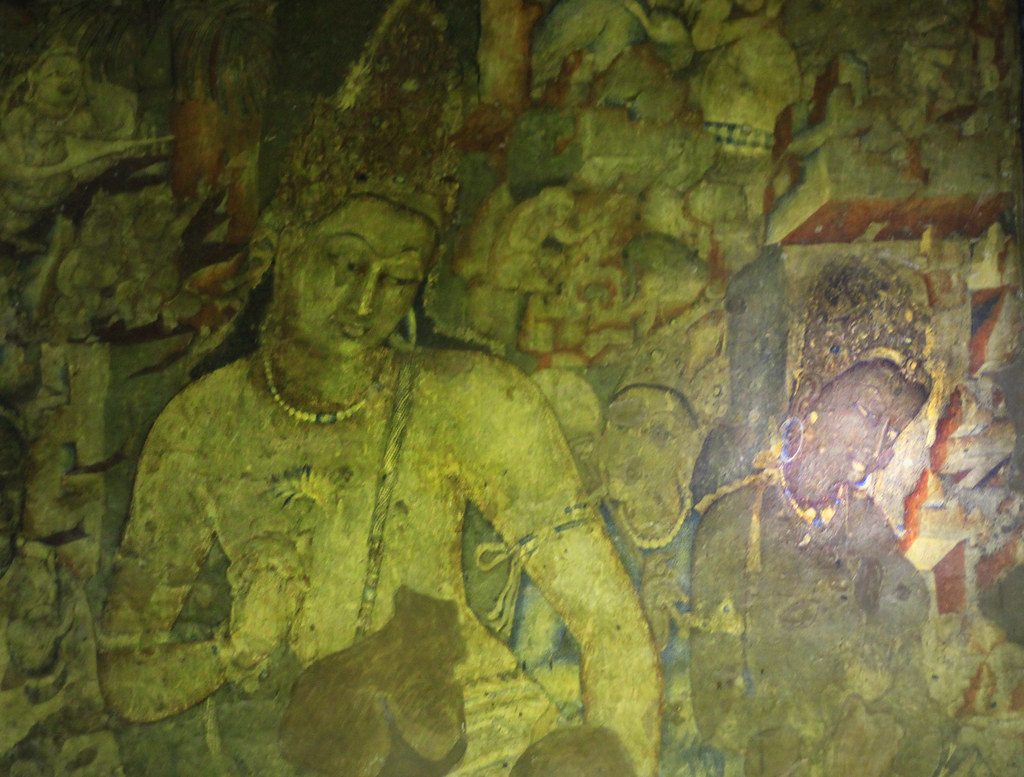
Padmapani: Art as an enlightened experience
Art is as much an emotional activity as it is an intellectual activity. It also reflects the intention of the artists, thus the art has a potential to invoke deeper emotions, sharp intelligence, and high intentions for the people who can imbibe it and engage with their entire being. Buddhist history is full of creation of arts and art forms: the creation of sublimity, even enlightenment through various media of sound, forms, scents, touch, and to some extent taste and smell. Some of the art forms developed by Buddhism are also expressed at a sublime level of mind: a beautiful mind that is highly artistic and its communication itself forms the high art in its being.
Buddhism is unique in terms of transforming the sensory data into high art as if senses are the only vehicle to communicate the beauty beyond frozen words, symbols, and images. But the vehicle of words, symbols, and images are important to transport one’s experiences in the realm of transformed experience by this two-way interaction between the forms/modes of art and the human consciousness receptive to them.
Padmapani painted on the walls of Ajanta caves is one of the famous paintings in the Buddhist history. We have no way to know much about the musical arts and instruments used by the Buddhists in the past as Music is the art that happens “here and now” unless recorded and there was no means to record this spontaneity then. However, we can get a glimpse of the development of the music by the Buddhists by studying contemporary Buddhist music.
The fact that the Buddhist literature is full of verses and listening/reading them really invokes the musical feelings because of their “musical forms”. One can get the musical experience reading the verses of Sutta Nipata and Therigatha.
So let us concentrate on a painting of Padmapani to understand Buddhist arts and aesthetics as we can witness it even today to understand the depth of the artistic experience and expression.
 First of all, there are many paintings in the Ajanta caves and many of them are the highest levels of attainments in not only arts but also in science. In one of the cave paintings of Ajanta, the viewer is made the part of the painting itself: as the painting is three-dimensional that depicts the scene in the court, maybe the first holographic painting in the history. Another remarkable painting is that of the dark princess of Ajanta in which the colours are pronounced so well that even after a thousand years they are so alive that she feels like she is breathing.
First of all, there are many paintings in the Ajanta caves and many of them are the highest levels of attainments in not only arts but also in science. In one of the cave paintings of Ajanta, the viewer is made the part of the painting itself: as the painting is three-dimensional that depicts the scene in the court, maybe the first holographic painting in the history. Another remarkable painting is that of the dark princess of Ajanta in which the colours are pronounced so well that even after a thousand years they are so alive that she feels like she is breathing.
But perhaps the greatest painting in Ajanta is that of Padmapani. In this cave, the carved image of the Shakyamuni Buddha is flanked by two Bodhisattvas: Padmapani and Vajrapani. Padmapani is holding the lotus flower and he is very beautifully painted. The eyes get at once riveted on the eyes of the Padmapani and there is something mysterious in the eyes of Padmapani: the compassion and sublime wisdom.
He is the Lord who looks at the world from the eyes of compassion, but it is not ordinary compassion, it is the compassion endowed with wisdom, unparalleled wisdom. The emotions invoked by Padmapani in the hearts of observers is primarily the compassion and calm. The artists were successful in getting the emotions radiated from the painting and rippled into our hearts. The phenomenon of vibrating together: the essence of communication and compassion.
The science of paintings of Ajanta is well advanced. One cannot just paint on the stones, the artists must have some knowledge of chemistry, physics, botany, and optics. The different colours must be prepared from different sources: the blue from the minerals, the green from the plants, and so on and on. It has to be advanced knowledge of chemicals and their compounds to produce colours. Then the artist must be equipped with the understanding of optics, nature of light and fine work of shadow and light to produce an extraordinary visual experience.
There is so much hidden in one painting of Ajanta and there is no single key to unlock all the secrets of Padmapani. How many mysteries are hidden in the history of Buddhism in India!
Author – Mangesh Dahiwale, Human Rights Activist



+ There are no comments
Add yours